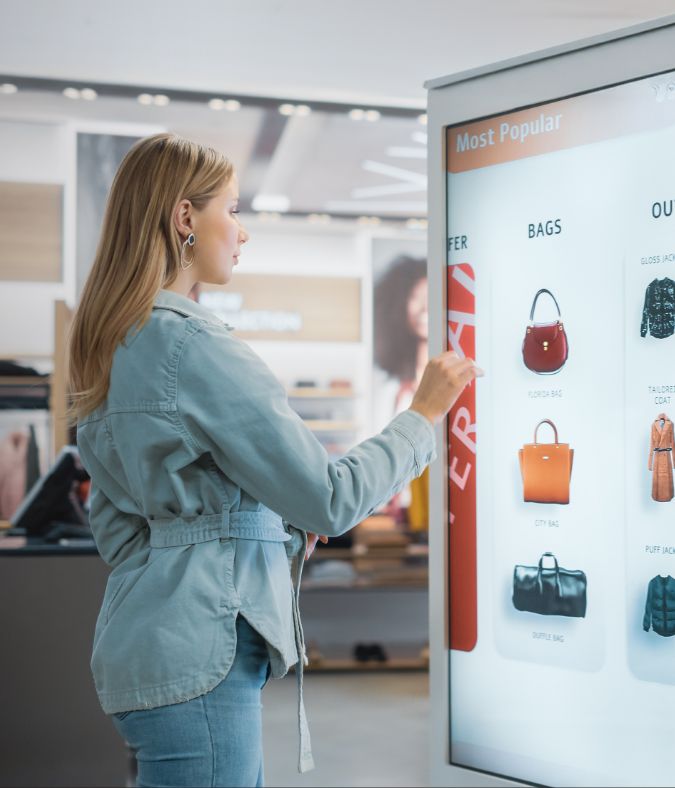The tides are shifting for the retail industry, revealing new opportunities through in-store digital connectivity and dynamic media networks. Despite the surge in eCommerce over the last several years, 80% of all shopping still happens in stores. Customers returning for in-store shopping are driving the future of retail technology. Meanwhile, although in-store retail media ad spending is expected to exceed $1 billion by 2028, that value accounts for less than 1% of total omnichannel retail media ad spending.
In this evolving landscape, the key to success for brands lies in integrating the in-store experience with digital networks, making every visit to the store a part of a larger, connected journey. To access additional revenue streams, retailers must maximize their in-store digital assets and adopt innovative advertising strategies near the point of purchase, enabling a full-funnel, omnichannel retail media networks (RMN).
What’s driving the growth?
Brands still favor in-store retail media networks to meet the demands for closed-loop measurement and first-party customer data. Brands have greater control through these networks, enabling them to better assess the impact of ads and maximize ROI.
Digital platforms and in-store displays have become the preferred mediums to expand RMNs beyond online and mobile advertising and truly embrace omnichannel capabilities. This includes repurposing data collected across channels to improve engagement and tailor messages to shifting audience demographics.
Tapping into new opportunities and use cases
Retailers can create highly effective in-store advertising environments that drive ad revenue while enhancing the overall shopping experience by tapping into:
- Programmatic ad ingestion: Ad spending on programmatic displays is projected to grow three times faster than non-programmatic displays in 2024. Optimized ad management and placement create immersive buying experiences, promote upselling opportunities to expand cart size, and ensure conversions without requiring additional staffing or the distribution of brochures/pamphlets. For example, programmatic ad ingestion enables retailers to showcase products while considering real-time factors such as weather, time of day, and temperature.
- Endemic advertising: Focused on products directly related to retailers' core offerings, endemic advertising improves the context and relevance of the advertised products, leading to higher sales and revenue for both the retailer and brands. For instance, a sports store can strategically place digital ads to boost sales of running shoes or bicycles .
- Non-endemic advertising: This advertising strategy generates additional revenue by promoting products that are unrelated but potentially appealing to customers. For example, ads for healthcare services in a particular section of a grocery store can pique customer interest and drive sales for an unrelated product.
- Post-sale customer engagements: By integrating post-sale engagement into in-store retail media strategy, retailers can promote additional products and services, driving further sales. Consider a clothing retailer that stores customer purchase data and enquires with the customer about the purchased product over digital channels or during their next store visit, thereby building customer loyalty.
- Moments of brand exclusivity: Retailers can create premium advertising opportunities by offering exclusive ad space or a period during which brands can capture the undivided attention of shoppers. For example, electronic stores can symbiotically boost the sales of a newly launched gadget by offering the brand exclusive ad space in a high-traffic area of the store during the launch period.
Unlocking the true potential of RMNs
In-store retail media networks offer a versatile platform for retailers, far beyond a simple one-dimensional approach. To leverage the full capabilities of RMNs, retailers must adopt a holistic strategy that includes unified approaches, strategic display placement, engaging content, and the right implementation partners and technologies.
Integrating dynamic creatives, A/B testing capabilities, and advanced technologies such as AI-powered video intelligence, programmatic advertising, and an ad measurement tool paired with leading IP camera technology, enables retailers to effectively utilize in-store RMNs. For instance, an AI-driven AdPool solution for programmatic advertising can provide high-fidelity impressions and engagement analytics to measure and optimize digital out-of-home (DOOH) media and merchandising campaigns in real time, increasing revenue and future-proofing digital advertising.
Leading the retail media revolution
Dynamic digital platforms and displays will continue to serve as valuable gateways for retail media, allowing businesses to achieve a full-funnel effect for the foreseeable future. These tools enable retailers to offer omnichannel experiences by seamlessly integrating online and offline interactions. They also allow retailers to deliver more personalized content and enhance customer engagement.
Solutions like Wipro VisionEDGE empower stores with a robust retail media network solution to transform the in-store experience and brand advertising. Through digital signage, enterprise networks, IP cameras with crowd analytics, system integration, and managed services, these solutions transform digital assets into immersive experiences.
The future of retail hinges on adaptability and innovation. Digital advertising within physical stores is crucial for retailers aiming to stay ahead. By integrating technology and strategic advertising, businesses can enhance customer experiences and tap into new revenue streams, ensuring their place in the evolving retail landscape.


